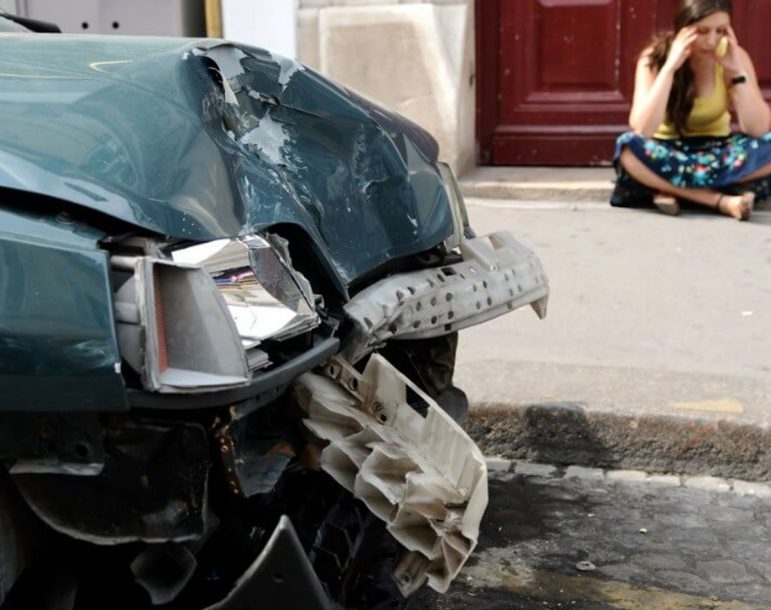As you travel to your destination via Texas roads, you might be mulling over the list of activities you have planned for the day. However, whether this list is long or short, it probably doesn’t include getting involved in a motor vehicle accident in Houston.
Unfortunately, an accident can take place at any given moment and under a variety of circumstances. While preventing every single collision could be near impossible, by taking the time to learn about the scenarios in which an accident might occur, you could be better prepared to avoid a potential disaster.
12 Common Car Accident Scenarios
The most common car accident scenarios can help drivers become more aware of potential hazards and take proactive measures to avoid them. This guide explores the typical types of car accidents, their causes, and tips on how to prevent them. Here is a 12-car accident scenario example.
1. Rear-End Collisions
Rear-end collisions are among the most common types of car accidents. These occur when one vehicle crashes into the back of another. The primary causes include distracted driving, sudden stops, and following too closely.
Prevention Tips: Maintain a safe following distance, avoid distractions like texting while driving, and be vigilant about the flow of traffic ahead.
2. Side-Impact Crashes (T-Bone)
Side-impact crashes, or T-bone accidents, happen when the front of one vehicle strikes the side of another, often at intersections. These accidents are typically caused by running red lights, failing to yield, or speeding. T-boned while turning left is also a common example.
Prevention Tips: Always obey traffic signals, check for oncoming traffic before crossing intersections, and reduce speed when approaching busy intersections.
3. Head-On Collisions
Head-on collisions are among the most severe types of car accidents, where the front ends of two vehicles collide. These accidents are usually caused by drivers veering into oncoming traffic, often due to fatigue, impaired driving, or poor road conditions.
Prevention Tips: Stay alert, especially on two-lane roads, avoid driving when tired or under the influence; and always stay within your lane.
4. Sideswipe Accident Scenarios
Sideswipe accidents occur when two vehicles traveling in the same direction make contact with each other, often during lane changes. These accidents can be caused by improper lane changes, failing to check blind spots or distracted driving. How to tell who sideswiped should be known.
Prevention Tips: Always check your mirrors and blind spots before changing lanes, use turn signals, and avoid distractions.
5. Single-Vehicle Accidents
Single-vehicle accidents involve only one car and can include running off the road, hitting an obstacle, or rolling over. These are often caused by driver error, speeding, or poor weather conditions.
Prevention Tips: Drive according to road conditions, avoid speeding, and stay focused on the road, especially in adverse weather.
6. Multi-Vehicle Pileups
Multi-vehicle pileups usually occur on highways or in foggy conditions where visibility is low, and vehicles are traveling at high speeds. Chain-reaction crashes often start with one vehicle braking suddenly, which triggers a series of subsequent crashes. Poor weather conditions, such as fog, heavy rain, or ice, can significantly increase the risk. These accidents can involve numerous vehicles and lead to extensive damage, injuries, or fatalities due to the number of impacts involved.
Prevention Tips: In poor visibility conditions, reduce your speed and increase your following distance. Be alert to the behavior of vehicles ahead and be prepared to stop suddenly.
7. Parking Lot Accidents
Parking lots are hotspots for minor accidents, often due to the high volume of vehicles and pedestrians in a confined space. Common causes include backing out of parking spaces without checking for oncoming vehicles, distracted driving, and failing to yield to pedestrians.
Consequences: While these accidents typically involve lower speeds and minor damage, they can still result in costly repairs and injuries.
Prevention Tips: Drive slowly and cautiously in parking lots. Use your mirrors and backup camera if available, and always yield to pedestrians.
8. Hit-and-Run Accidents
Hit-and-run accidents occur when a driver involved in an accident flees the scene without providing contact information or helping the injured. Fear of legal consequences, driving without insurance, or under the influence often leads to hit-and-run incidents.
Consequences: Victims of hit-and-run accidents may face challenges in getting compensation for damages and injuries, and these incidents are treated as serious offenses by law enforcement.
Prevention Tips: If you’re involved in an accident, stay calm and remain at the scene. Collect as much information as possible and report the incident to authorities immediately.
9. Rollover Accidents
Rollover accidents are especially dangerous and often involve larger vehicles like SUVs or trucks. Rollovers can be caused by sharp turns at high speeds, collisions with other vehicles, or hitting an obstacle that forces the vehicle to flip.
Consequences: The violent nature of rollovers can lead to severe injuries or fatalities, particularly if occupants are not wearing seatbelts.
Prevention Tips: Avoid sudden sharp turns, particularly at high speeds. If driving a vehicle with a higher center of gravity, be mindful of your speed and road conditions.
10. Road Departure Accidents
Road departure accidents happen when a vehicle leaves the roadway, often resulting in a collision with an object or a rollover. These accidents can be caused by driver inattention, drowsiness, impaired driving, or swerving to avoid an obstacle or another vehicle.
Consequences: Depending on the speed and the objects struck, these accidents can be highly destructive and deadly.
Prevention Tips: Stay focused on the road and avoid distractions. If you feel drowsy, pull over to a safe location and rest. Always drive at a speed appropriate for the road conditions.
11. Merging Accidents
Merging accidents happen when two vehicles collide while one is trying to join a new lane or highway. These accidents often occur when a driver doesn’t see another car in their blind spot or misjudges the speed of oncoming traffic. Not checking blind spots, merging too quickly, or not yielding to cars already in the lane.
Consequences: These can range from minor scrapes to serious side-impact collisions.
Prevention Tips: Always check your mirrors and blind spots before merging. Match your speed to the traffic and signal your intentions clearly.
12. Pedestrian Accidents
Pedestrian accidents occur when a vehicle hits a person walking or running, usually in busy areas like crosswalks or parking lots. Drivers not paying attention, speeding, or failing to yield to pedestrians.
Consequences: Pedestrians are highly vulnerable, so these accidents often lead to serious injuries.
Prevention Tips: Slow down in areas with pedestrians, especially near crosswalks. Always yield to people crossing the street, even if they are not in a crosswalk.
Prevalent Causes of Motor Vehicle Collisions
Chances are, you probably consider your well-being to be paramount and constantly seek out ways to increase your safety. Although it can be challenging to cover every possible hazard you might face on the road, knowing the most common causes of collisions could be beneficial, and these may include:
- Impairment: Driving under the influence of drugs or alcohol is never advisable, and those who operate a vehicle under similar effects may jeopardize your safety in the process.
- Distraction: Any act that causes a driver to divert his or her attention to the task at hand can be dangerous, and common forms of distraction include carrying on a phone conversation or texting while driving.
- Reckless driving: Aggressive driving and speeding are two forms of reckless behavior, and this type of negligence can lead to unfortunate circumstances.
- Ignoring traffic laws: Traffic lights and stop signs are in place at most intersections to assist in controlling the flow of traffic, and those who fail to adhere to traffic laws and signs might place you in danger in the process.
- Lack of experience: In some cases, drivers who lack the necessary experience to handle certain scenarios can also create a potentially dangerous situation.
In times of inclement weather or at night, drivers may also be less capable of operating a vehicle safely. Regardless of how an accident happens, if the negligence of another party causes you to suffer serious harm, you might be wondering what comes next.
Pursuing Compensation
Suffering severe injuries in a collision could leave you facing a lengthy period of recovery and the financial hardships that often accompany extensive medical bills. While restitution may be an entitlement to you, the civil justice system can be complex. You could choose to seek guidance from someone with experience in similar matters, and in doing so, you might become better prepared to pursue the restitution you deserve through a personal injury claim against the party deemed culpable.
Car Accident Scenarios: Who’s Fault? Let’s Predict
Determining who is liable for a car accident is essential for seeking compensation. Liability can fall on various parties depending on the circumstances of the accident. Here’s a breakdown of who might be held responsible:
1. The Other Driver
2. The Vehicle Owner
3. Employers
4. Government Entities
5. Vehicle Manufacturers
6. Pedestrians or Cyclists
How Can a Houston Car Accident Attorney Help With Your Car Accident Claim in Houston, Texas?
Dealing with a car accident claim can be confusing and stressful, especially if you’re injured or facing costly repairs. A Houston car accident attorney can guide you through the process and help you get the compensation you deserve. Here’s how they can assist you:
1. Explaining Texas Car Accident Laws
Texas has specific laws about car accidents, like who’s at fault and how long you have to file a claim. An attorney can explain these laws and make sure you follow them, so you don’t miss out on any compensation.
2. Collecting Important Evidence
To support your claim, you need evidence like photos, police reports, and medical records. Your attorney will help gather this evidence and work with experts if needed to prove who was at fault.
3. Talking to Insurance Companies
Insurance companies may try to pay you less than you deserve. A car accident attorney will handle all the talks with them, fighting for a fair settlement that covers all your expenses.
4. Calculating Your Compensation
Your attorney will help figure out how much your claim is worth, including medical bills, lost wages, and pain and suffering. This ensures you ask for the right amount.
5. Negotiating a Settlement
An attorney will negotiate with the insurance company on your behalf. If the initial offer is too low, they’ll push for a better deal that meets your needs.
6. Going to court if needed
If a fair settlement isn’t possible, your attorney can take your case to court. They’ll represent you in front of a judge to help you get the compensation you deserve.

